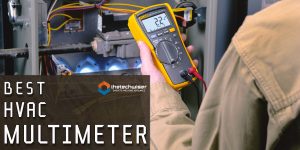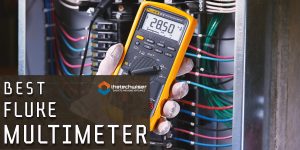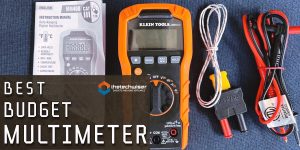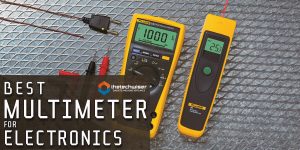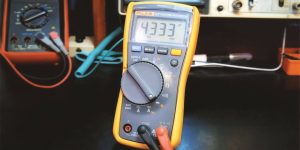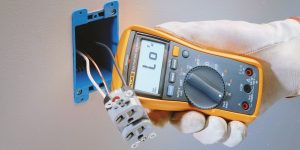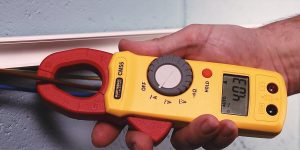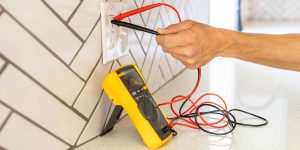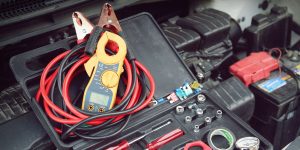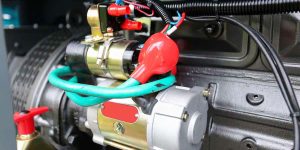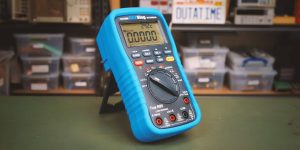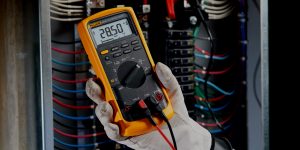Here we speak about an electronic measuring device that features several measurement functions in one unit.
For example, you can use them for measuring multiple electrical properties. For instance, voltage, current, and resistance. People can use them to test batteries, fuses, and other electrical components. Some models of multimeters have additional features.
Besides, you can use this device to test continuity and conductivity. Multimeters can also be used to troubleshoot electrical problems.
In what way can I measure voltage, current, and resistance with a multimeter?

If you want to measure voltage, current, and resistance with a multimeter, you need to use the ohmmeter, voltmeter, and ammeter functions.
Voltage is the difference in electric potential energy between two points in a circuit. The unit for voltage is volts, that is usually marked as “V”. It can be either positive or negative. The first type indicates that the point has more potential energy than the point to which it is being compared. As for negative voltage, it indicates that the point has less potential energy. Set the multimeter to the volts scale for voltage measurement and touch the probes to the two points you want to measure.
Current is defined as the rate of flow of charge through a conductor. In other words, it is the amount of charge that flows through a given point in a circuit per unit of time. Current is measured in units of amperes (A). If you want to measure it, you should use the ammeter function. It’s not challenging. Just set the multimeter to the amps scale and touch the probes to the two points you want to measure.
If we speak about electricity resistance, it measures how difficult it is for electrical current to flow through a material. The higher the material’s resistance, the more difficult it is for current to flow through it. Resistance is measured in ohms. To use the ohmmeter function, set the multimeter to the ohm scale and touch the probes to the two points you want to measure.
How can multimeter test batteries, fuses, and other electrical components?
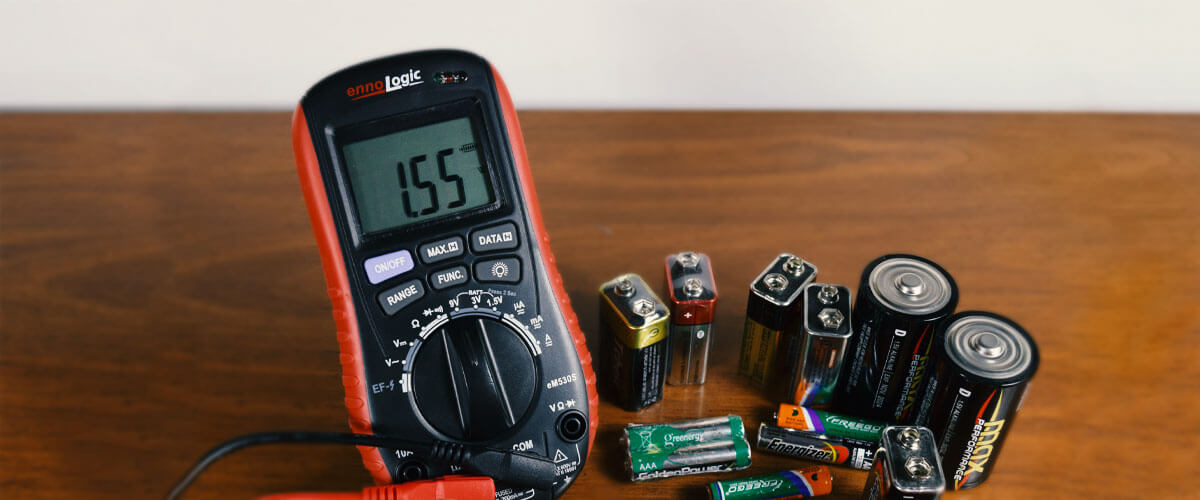
To test a battery, first, make sure that it is charged. You will need to charge it before proceeding if it is not. Next, use the multimeter to set it to the “DC Voltage” setting and touch the black lead to the battery’s negative terminal and the red lead to the positive terminal. The multimeter should read 12 volts. If it does not, then the battery is most likely dead.
If you want to test a fuse, use the multimeter to set it to the “Ohm” setting and touch the leads to the two ends of the fuse. If the multimeter reads 0 ohms, then the fuse is good. If it reads infinity, the fuse is blown and must be replaced.
As for testing other electrical components, such as wires and connectors, you should use the multimeter as in the previous example.
What additional functions can a multimeter feature?
Some such devices can feature extra functions: capacitance measurement, frequency measurement, and temperature measurement. In addition, some models may include features including a built-in flashlight, temperature measurement, or a capacitance meter. More advanced models may even include features such as oscilloscopes or logic probes.
These additional features can be helpful in a variety of situations. For instance, you can use capacitance measurement to test the capacity of a capacitor, while frequency measurement can be used to measure the frequency of an alternating current. In addition, temperature measurement can be used to get to know the temperature of a material or object.
Some such devices even come with a PC interface, allowing you to store and analyze your data on a computer.
We are supported by our audience. When you purchase through links on our site, we may earn an affiliate commission at no extra cost to you.
Our newsletter
* We will never send you spam or share your email with third parties

